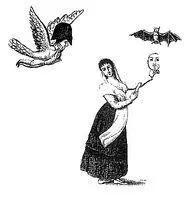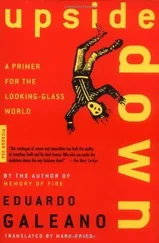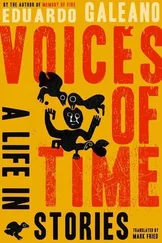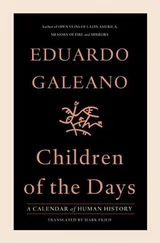
He had a prisonlike childhood and he believed in freedom as a religion.
That is why he dedicated his Third Symphony to Napoleon and then erased the dedication,
he invented music with no thought to what people might say,
he mocked the princes,
he lived in perpetual disagreement with everyone,
he was alone and he was poor, and he had to move house seventy
times.
And he hated censorship.
In the Ninth Symphony, the censors changed the title “Ode to Freedom,” taken from the poet Friedrich von Schiller, to “Ode to Joy.”
At the debut of the Ninth in Vienna, Beethoven took revenge. He conducted the orchestra and the chorus with such unbridled energy that the censored “Ode” became a hymn to the joy of freedom.
After the piece ended, he stood with his back to the audience, until someone turned him around and he could see the ovation that he could not hear.

Napoleon was crushed by the British at the Battle of Waterloo, south of Brussels.
Field Marshall Arthur Wellesley, the Duke of Wellington, took credit for the victory, but the true winner was the banker Nathan Rothschild, who did not fire a shot and was far from the scene.
Rothschild was the commander in chief of a platoon of carrier pigeons. Quick and well trained, they brought him the news in London. Before anyone else, he knew that Napoleon had lost, but he spread word that the French victory had been overwhelming, and he fooled the market by selling off everything British: bonds, stocks, pounds. Before you could say amen, everyone followed the lead of the man who always knew what he was doing. The assets of the nation they believed had been defeated got sold off as junk. Then Rothschild bought. He bought everything for nothing.
Thus was England victorious on the battlefield and vanquished on the stock exchange.
The banker Rothschild multiplied his fortune twenty times over and became the richest man in the world.
Several years later, toward the middle of the nineteenth century, the first international news agencies were born: Havas, now called France Presse, Reuters, Associated Press. .
They all used carrier pigeons.

Napoleon, a symbol of France, was born in Corsica. His father, an enemy of France, gave him an Italian name.
The croissant, another symbol of France, was born in Vienna. Not for nothing does it bear the name and form of a crescent moon, which was and remains the symbol of Turkey. Turkish troops had laid siege to Vienna. One day in 1683, the city broke the siege and that same night, in a pastry shop, Peter Wender invented the croissant. And Vienna ate the vanquished.
Then Georg Franz Kolschitzky, a Cossack who had fought for Vienna, asked to be paid in coffee beans, which the Turks had left behind in their retreat, and he opened the city’s first café. And Vienna drank the vanquished.

The cuisine that is the pride of France was founded by Jean Anthelme Brillat-Savarin, a disillusioned revolutionary, and Alexandre Balthazar Laurent Grimod de La Reynière, a nostalgic monarchist.
The Revolution was over, the serfs had changed lords. A new order was emerging, a new class was in charge, and these two set out to tutor the palates of the victorious bourgeoisie.
Brillat-Savarin, author of the first treatise on gastronomy, is said to have uttered the words later repeated by so many others: “Tell me what you eat and I will tell you who you are.” And also: “The discovery of a new dish contributes more to human happiness than that of a new star.” His knowledge came from his mother, Aurora, a specialist who died at the dinner table at the age of ninety-nine: she felt ill, drained her wineglass, and begged them to hurry the dessert.
Grimod de La Reynière was the founder of culinary journalism. His articles in newspapers and yearbooks fed restaurants with new ideas. No more was the art of good eating a luxury reserved for the banquet halls of nobility. The one whose fingers were all over this had none: Grimod de La Reynière, grand master of pen and spoon, was born with no hands, and he wrote, cooked, and ate with hooks.

In 1814 Ferdinand VII posed for Francisco de Goya. There was nothing unusual in that. Goya, court painter for the Spanish Crown, was doing a portrait of the new monarch. But artist and king detested each other.
The king suspected, and with good reason, that Goya’s court paintings were disingenuously kind. The artist had no choice but to do the job that earned him his daily bread and provided an effective shield against the enmity of the Holy Inquisition. There was no lack of desire on God’s tribunal to burn alive the creator of La maja desnuda and numerous other works that mocked the virtue of priests and the bravery of warriors.
The king had power and the artist had nothing. It was to reestablish the Inquisition and the privileges of nobility that Ferdinand came to the throne borne on the shoulders of a crowd cheering:
“Long live chains!”
Sooner rather than later, Goya lost his job as the king’s painter and was replaced by Vicente López, an obedient bureaucrat with a brush.
The unemployed artist then took refuge in a country home on the banks of the Manzanares River, and on the walls he created the masterpieces known as the Black Paintings.
Goya painted them for himself, for his own pleasure or displeasure, in nights of solitude and despair. By the light of candles bristling on his hat, this utterly deaf man managed to hear the broken voices of his times and give them shape and color.


In 1814 King Ferdinand killed Pepa.
Pepa was what the people called the Constitution of Cádiz, which two years earlier had abolished the Inquisition and enshrined freedom of the press, the right to vote, and other insolent novelties.
The king decided that Pepa never was. He declared it “null and worthless and void, as if such acts, which ought to have been removed from time’s way, had never occurred.”
Then to remove from time’s way the enemies of monarchic despotism, gallows were built all over Spain.
Early one morning in 1831, outside one of the gates of the city of Granada, the executioner twisted the tourniquet until the iron collar broke the neck of Mariana Pineda.
She was guilty. Of embroidering a flag, of not betraying freedom’s conspirators, and of refusing to provide the judge who condemned her with the favor of her love.
Mariana had a brief life. She liked forbidden ideas, forbidden men, black mantillas, hot chocolate, and slow tunes.

The “lady liberals,” as Cádiz police called them, conspired in code.
From their Andalusian grandmothers they had learned the secret language of fans, which worked equally well for disobeying husband or king: the slow unfoldings and rapid closings, the ripplings, the flutterings.
Читать дальше




















